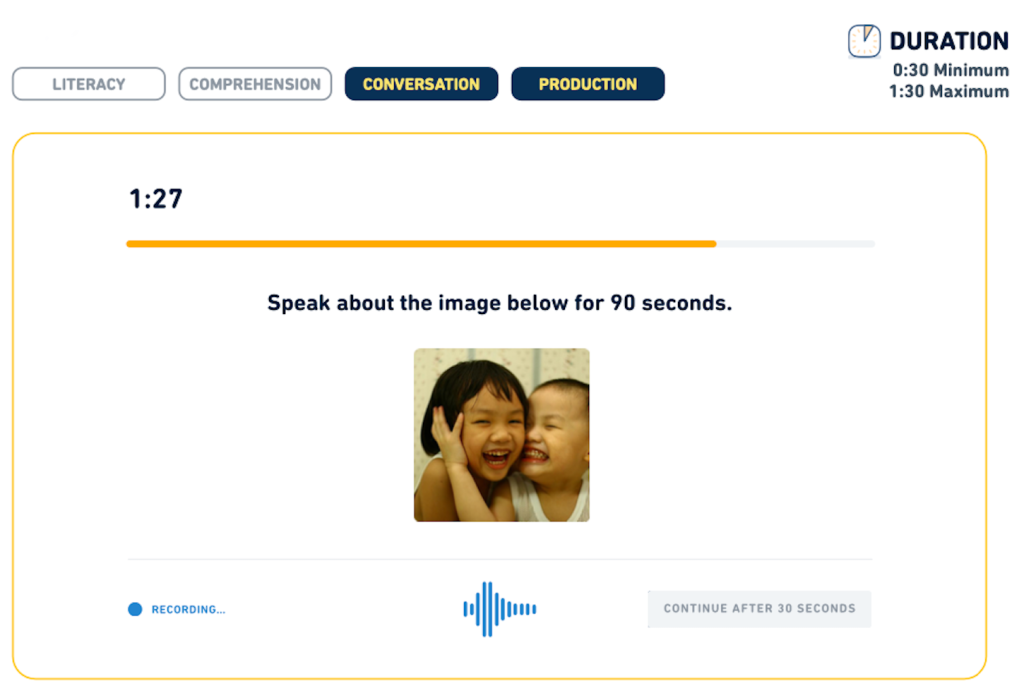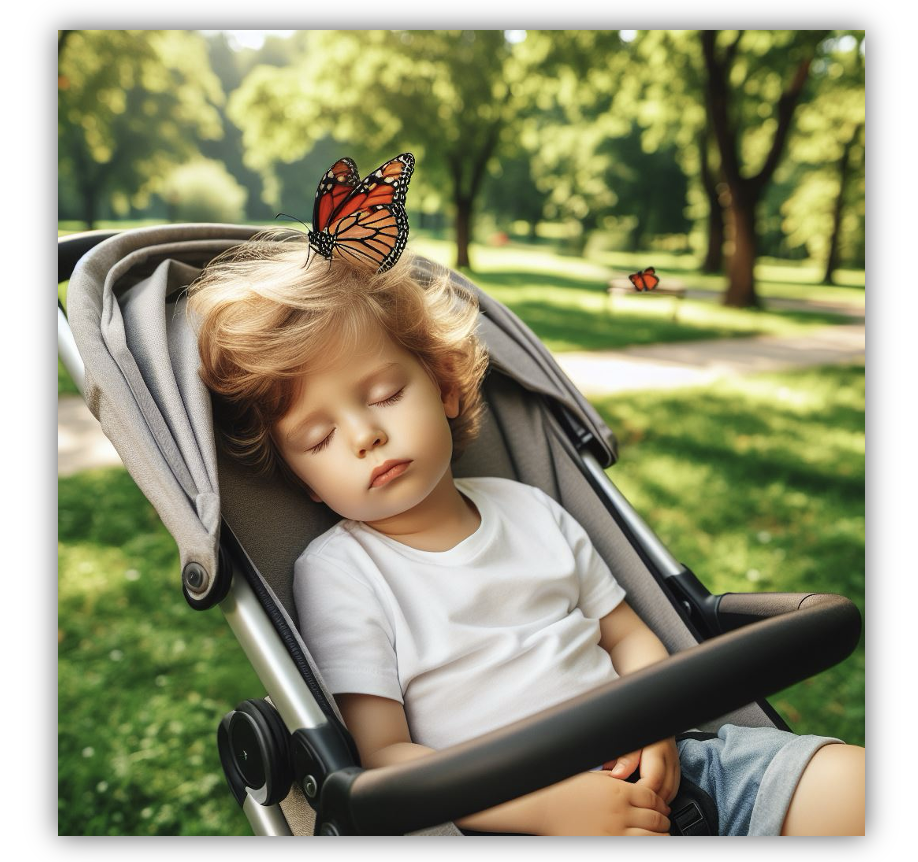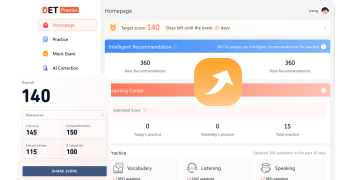Top-Techniken für den Duolingo Englisch-Test Sprechen: Beherrschung der Aufgabe "Über das Foto sprechen"
Hallo, zukünftige Champions des DET (Duolingo English Test)! Willkommen bei DET Practice. Heute werden wir erkunden, wie man den Teil ‘Speak about the Photo’ im DET angeht. Zuerst werfen wir einen Blick darauf, was die Frage ‘Speak about the Photo’ ist:

Dieser Abschnitt, wie er im offiziellen DET-Studienleitfaden vorgestellt wird, beinhaltet eine einzigartige mündliche Übung. Im Gegensatz zu den Sprechaufgaben im TOEFL oder IELTS erfordert diese Aufgabe, dass Sie ein Foto verbal auf Englisch beschreiben. Dies wirkt sich sowohl auf die ‘Gesprächs’- als auch auf die ‘Produktions’-Punkte aus und hat eine Antwortzeit von 30-90 Sekunden.
* Für eine detailliertere Einführung in die Aufgabe ‘Speak about the Photo’, empfehlen wir unseren früheren Artikel: “Speak about the Photo“.
Zur Verständigung der DET-Bewertung und Strategien zur Verbesserung lesen Sie “Duolingo English Test Scores: Insights and Comparisons” und “The Ultimate Guide to the Duolingo English Test” jeweils.
Um in mündlichen Aufgaben eine gute Punktzahl zu erreichen, müssen Sie innerhalb der vorgegebenen Zeit flüssig sprechen. Dies ist auch in anderen Sprachtests wie TOEFL oder IELTS entscheidend. Eine Herausforderung bei ‘Speak about the Photo’ besteht darin, dass es keine vordefinierten Eingaben gibt, was es schwierig machen kann, eine Antwort von 1 Minute und 30 Sekunden aufrechtzuerhalten, insbesondere wenn die Elemente des Fotos begrenzt sind. Welche Strategien können wir also anwenden?
Strategie für ‘Speak about the Photo’
Bevor wir uns spezifischen Techniken widmen, betrachten wir ein Beispielfoto. Beachten Sie, dass DET oft Bilder mit Menschen verwendet, die Nahaufnahmen von Ausdrücken oder Handlungen enthalten können.

Objektive Beschreibung
Im DET werden mündliche Aufgaben basierend auf der Relevanz zum Thema bewertet. Wir empfehlen, innerhalb der ersten 30 Sekunden mit einer objektiven Beschreibung des Fotos zu beginnen, um sicherzustellen, dass Ihre Antwort themenbezogen ist. Wenn das Foto beispielsweise ein blondes Kind zeigt, das im Freien in einem Kinderwagen schläft, umgeben von üppigem Grün, möglicherweise ein Wald oder Park, könnten Sie die Kleidung des Kindes beschreiben (ein weißes T-Shirt und graue Shorts, was auf einen warmen Sommernachmittag hindeutet) und einen Schmetterling, der auf seinem Kopf ruht. Sie könnten auch die friedliche Atmosphäre vermitteln und vermuten, dass ein Elternteil diesen friedlichen Moment eingefangen hat. In ‘Speak about the Photo’ sollten Sie über Menschen, Kleidung, Handlungen, Berufe, Identitäten, emotionale Zustände, Gesichtsausdrücke und Umgebungen sprechen.
Gemäß unserer vorherigen Diskussion könnte Ihre Antwort wie folgt aussehen:
So, what we’re looking at here is really a picture-perfect scene taken outdoors. The greenery is vibrant—there’s grass, and trees all around, so I’m thinking this could be a beautiful park or maybe even a bit of forest area. Now, right in the heart of this natural setting, we’ve got this adorable blond child, just fast asleep in their stroller. They’re dressed in the simplest summer outfit, you know, a white T-shirt, grey shorts—totally what you’d wear on a sunny afternoon. And there’s this little surprise—a butterfly has landed right on their head! It’s one of those moments that’s just so peaceful, so serene, it’s got to be one of those memories that parents love to capture. It’s the kind of day that just feels like a gift, doesn’t it?
Ja, diese Antwort klingt gut. Aber es gibt ein Problem, sie ist zu kurz. Diese Antwort reicht möglicherweise nicht aus, um 1 Minute und 30 Sekunden Sprechzeit einzuhalten.
Persönlicher Kommentar
Ist es okay, persönliche Kommentare hinzuzufügen? Ja. Nach der objektiven Beschreibung des Fotos sind dazugehörige persönliche Kommentare eine brauchbare Strategie. Achten Sie jedoch auf die Anzahl der Sätze (3-5 Sätze), um nicht vom Thema abzukommen. Persönliche Kommentare helfen, die Antwort zu erweitern, während sie relevant bleiben.
Für das obige Beispiel könnten wir hinzufügen:
Well, looking at this image really warms my heart. It’s such a delightful scene. Being outdoors, taking in the fresh air, it’s incredibly beneficial for kids—both for their physical health and mental well-being. They get to be up close to nature, run around, jump, and even interact with wildlife, like this gentle butterfly here. It’s fantastic because it’s not just about staying active; it’s about feeding their curiosity as well. I truly believe that kids should engage in outdoor activities more often.
Die Antwort sieht gut aus, wir haben unsere eigenen Kommentare hinzugefügt und versucht, die Antwort beim Thema zu halten. Denken Sie also daran, dass das Hinzufügen persönlicher Kommentare eine gute Möglichkeit ist, die Frage ‘Speak about the Photo’ zu erweitern. Gibt es noch andere Möglichkeiten, die Antwort zu erweitern? Bitte lesen Sie den folgenden Inhalt weiter.
Foto-Hintergrund
Betrachten Sie den Kontext des Fotos. Wir können darüber nachdenken, unter welchen Umständen ein Bild aufgenommen wurde. Wie in unserem obigen Beispiel können wir uns vorstellen, dass dieses Bild von den Eltern des Kindes aufgenommen wurde, es könnte ein Wochenende sein (weil sie nicht arbeiten müssen und Zeit haben, nach draußen zu gehen oder im Park spazieren zu gehen oder sich zu entspannen), eine Szene eines Familienausflugs. Oder woran erinnert Sie dieses Bild? Zum Beispiel an Ihre eigene Kindheitserfahrung. Vielleicht können wir sagen, dass mich dieses Bild an meine Kindheit erinnert, meine Eltern und ich gingen oft in den Park in der Nähe unseres Hauses, und die Landschaft im Park war genauso schön wie auf dem Bild. Nun, es ist Zeit für uns, die Antwort weiter auszubauen, lassen Sie uns mit der vorherigen Antwort fortfahren:
You know, this photo might very well have been taken by the child’s parents, capturing a slice of family time—perhaps over the weekend when there’s no work to rush to, allowing for a leisurely stroll in the outdoors or some relaxing time in the park. And it’s the kind of scene that nudges at my own memories, taking me back to my childhood. My parents would often take me to the park near our home, much like the one in this picture, where the scenery was just as picturesque.
Nun sieht die Antwort substantieller aus.
Persönliche Gefühle hinzufügen
Wird dies off-topic sein? Nicht, wenn Ihr Vorgehen korrekt ist. Dies ist der Teil, in dem Sie wirklich Ihre Fähigkeiten zeigen, denn wir sprechen über die Gefühle, die das Bild bei uns hervorruft, zum Beispiel können wir sagen:
So, it’s more than just a photograph; it’s a reminder of those carefree, joyful days. It’s about the bond we share with our loved ones and the simple pleasures of life, like watching your child sleep peacefully under the watchful eye of nature. You know, this image is a beautiful echo of times spent with family, treasured and timeless.
Nun, das ist es. Ich glaube, wir haben ein ziemlich vollständiges und hochwertiges mündliches Antwortbeispiel, lassen Sie uns alles zusammenfassen:
So, what we’re looking at here is really a picture-perfect scene taken outdoors. The greenery is vibrant—there’s grass, and trees all around, so I’m thinking this could be a beautiful park or maybe even a bit of forest area. Now, right in the heart of this natural setting, we’ve got this adorable blond child, just fast asleep in their stroller. They’re dressed in the simplest summer outfit, you know, a white T-shirt, grey shorts—totally what you’d wear on a sunny afternoon. And there’s this little surprise—a butterfly has landed right on their head! It’s one of those moments that’s just so peaceful, so serene, it’s got to be one of those memories that parents love to capture. It’s the kind of day that just feels like a gift, doesn’t it?
Well, looking at this image really warms my heart. It’s such a delightful scene. Being outdoors, taking in the fresh air, it’s incredibly beneficial for kids—both for their physical health and mental well-being. They get to be up close to nature, run around, jump, and even interact with wildlife, like this gentle butterfly here. It’s fantastic because it’s not just about staying active; it’s about feeding their curiosity as well. I truly believe that kids should engage in outdoor activities more often.
You know, this photo might very well have been taken by the child’s parents, capturing a slice of family time—perhaps over the weekend when there’s no work to rush to, allowing for a leisurely stroll in the outdoors or some relaxing time in the park. And it’s the kind of scene that nudges at my own memories, taking me back to my childhood. My parents would often take me to the park near our home, much like the one in this picture, where the scenery was just as picturesque.
So, it’s more than just a photograph; it’s a reminder of those carefree, joyful days. It’s about the bond we share with our loved ones and the simple pleasures of life, like watching your child sleep peacefully under the watchful eye of nature. You know, this image is a beautiful echo of times spent with family, treasured and timeless.
Durch die Kombination dieser Ansätze können Sie eine umfassende und gut entwickelte mündliche Antwort erstellen. Wir hoffen, dass Ihnen diese Strategien helfen, im ‘Speak about the Photo’-Abschnitt des DET zu glänzen. Viel Glück bei Ihrem Duolingo English Test!
Beginnen Sie noch heute mit dem Üben, indem Sie sich für unsere DET-Fragenbank kostenlos anmelden.






